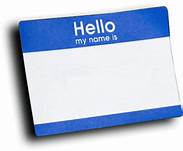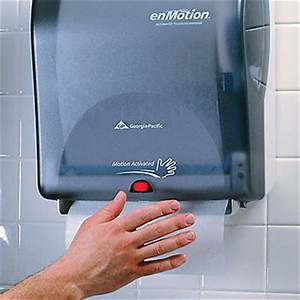I dutifully attended a nearby Chamber of Commerce networking event last week, bringing a pocketful of business cards, and tucking both store brochures and event calendars in my bag, along with my cell phone with its alarm function set to ring in 55 minutes. (Did you know that you can make your alarm sound like a ringing phone? And that you can “take that call” after looking at the screen, immediately excusing yourself from any function? And that most reluctant networkers can be found in the foyer of such meetings, taking “calls” about 55 minutes in to these events?)
It wasn’t MY Chamber event, so I didn’t plan on knowing anyone there. We live in a bedroom community of a large city, and all the neighboring towns have their own chambers or business networking groups. It’s easy to go have a glass of wine once a month at our local chamber meeting, visiting with the same folks from my hometown, but I shop in all their stores anyway. I know their kids and grandkids, and while it’s lovely to see them, I don’t necessarily spread the scope of our store by being there. So every month or two, I try to go to another nearby community event as well. It’s good for me, I tell myself, to make new connections and it’s better for me as a business owner and manager to be the new person in the room, and feel vaguely out of place. That’s exactly how new customers feel when they enter our stores for the first time, and I think that there are lessons to be learned there in both hospitality and marketing.
Some communities host these events in member businesses, and some use a catering or conference facility. I much prefer the former, as I can browse other stores between conversations, and there’s always something on the wall to talk about with people I don’t know (Wow! Who knew that Larry Bird was a customer here – and what an awesome signed picture! Is that Slick Leonard standing next to him, with that amazing plaid jacket?) It’s also fun to see other businesses’ stock rooms and “back of the house” and realize that everyone is as space-challenged as we are.
I have noticed that many retail stores and product showrooms are visually overwhelming. Ours certainly is. There is SO MUCH to look at, and it’s difficult sometimes to figure out how everything is organized. Signs are really important, and no matter how big they are, they could always be a little bit clearer, a little bit larger, and a little more obvious.
Bathrooms, too, seem to be an overlooked part of many retail operations. Since we cater to children, a larger, well lit and easy-to-maneuver-a-stroller-in bathroom is critical. At the very least, they should be easy to find, and the light switches shouldn’t require a step stool to reach. I also wish that everyone who owns or manages a store would periodically go into the bathroom, close the door, and then try to open it again from the inside… while kneeling, say, at the height of an average four or five year old – the age when a young person might first visit the restroom alone. Can you open the door? Even in extreme weather, when temperature changes cause the door frame to change, and doors to stick? If you have ever been stuck in a room (bathroom or not) and not been able to get out, you know what a traumatic experience that can be. Also, while I’m making restroom requests, could we just all agree that any paper towel dispenser that requires interpretive dance choreography to operate is just not helpful?
Watching other chamber event guests enter and either drift easily into conversation with familiar members or stand awkwardly balancing a plastic cup of wine and napkin with one hand while studiously inspecting the cheese tray (they’re cubes, it’s cheddar, you’re done… move on) is an object lesson in hospitality. It only takes an extra few seconds to connect people with others in the room, or with something to look at. Sometimes in our stores, we are GREAT at that initial greeting, but then drop the ball (or the cheese cube). While I caution my staff to avoid the phrase “can I help you?” because it puts people on the spot and invites the inevitable “no thanks, just looking,” I think there is a happy medium between hovering and customer isolation. Often, it’s as simple as telling them that you’re over here, unpacking something new (would they like to see?) or trying to figure out if that biography display needs to be moved a foot or two to the left…. what do they think? Engaging people in conversations that are about something other than what they want to buy makes everything friendlier, more personal, more like…. their bookstore.
Ending conversations to move to a new group is a seemingly lost art, and observing this occurrence among (perfectly nice) strangers made me think about how we move between customers at the shop. In my opinion, it’s quite acceptable to say “it’s been lovely to meet you – I hope we get to talk again soon” and proffer a hand to shake (once you’ve shifted the plastic cup, napkin, and disposed of the cheese cube). It’s simply horrid, however, to let your eyes drift to someone over your company’s shoulder, and raise a glass or an eyebrow as you signal that they are a more important conversation (the much discussed “trade show glance” – you know what I mean). So I want to make sure that guests in my own store feel important, too, with a “I will let you browse for as long as you’d like, but I’ll check back in” or when they do sometimes leave without a purchase, making a point of saying goodbye.
The whole trading of business cards ritual seems so old-fashioned, but there is something tangible about a piece of paper that solidifies a connection in a real way. I think about those customers that I offer a store calendar, an Indie Next flier, or (yes, we still do this) a real paper copy of our newsletter. Somehow, leaving with a tangible item is not only an offering from us, but a physical connection with the customer. They chose to leave with something that is uniquely ours, and carried the relationship back into their lives. Whether or not we gift-wrapped a Grisham or a Gruffalo, they are carrying a part of us out of the store.
Oh, excuse me, I need to take this call.


